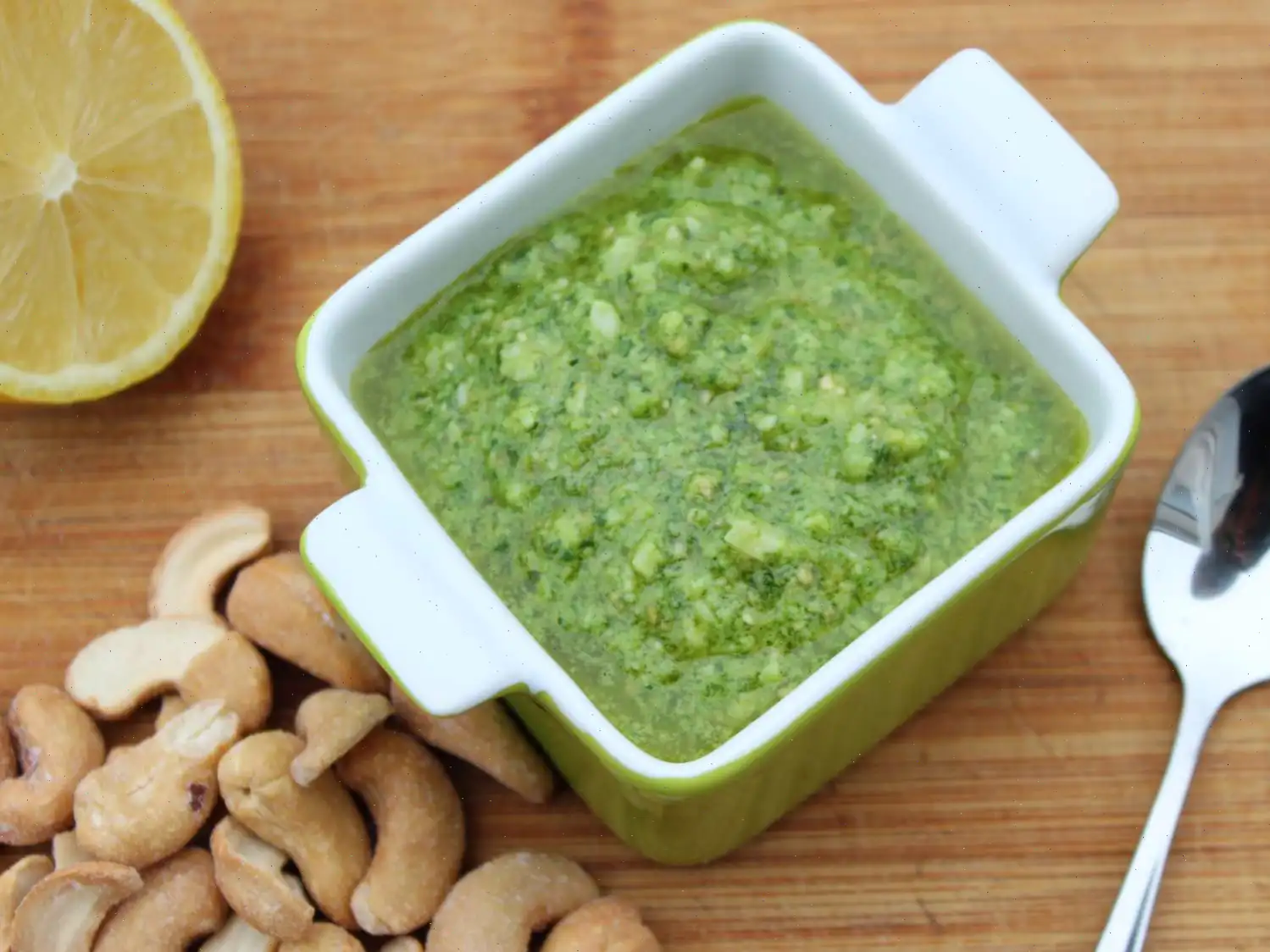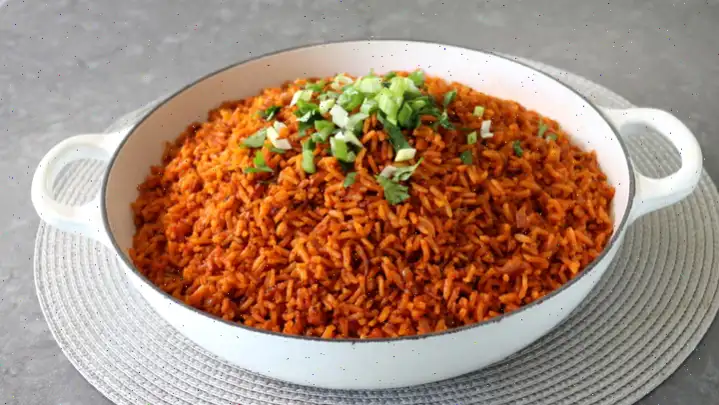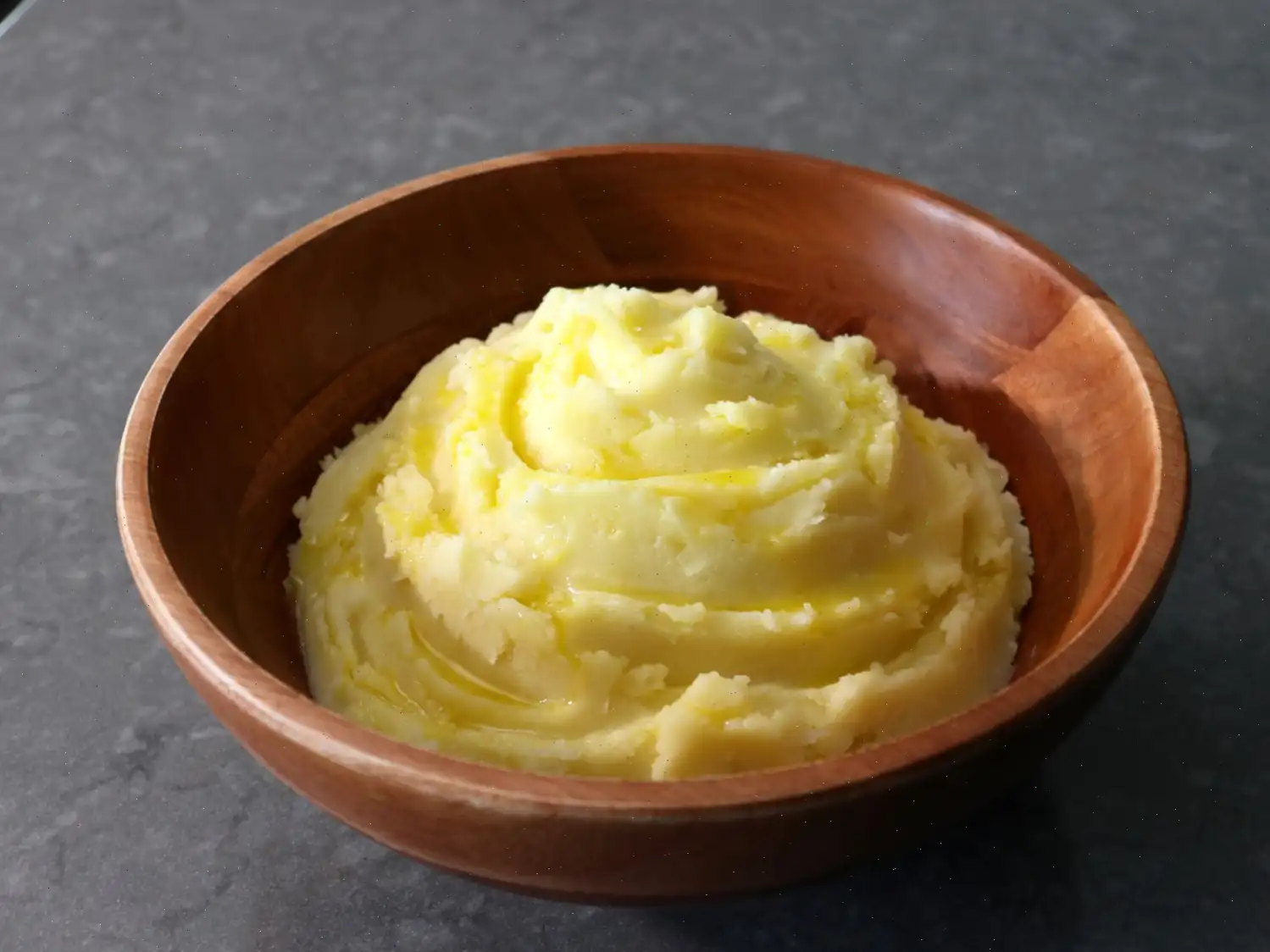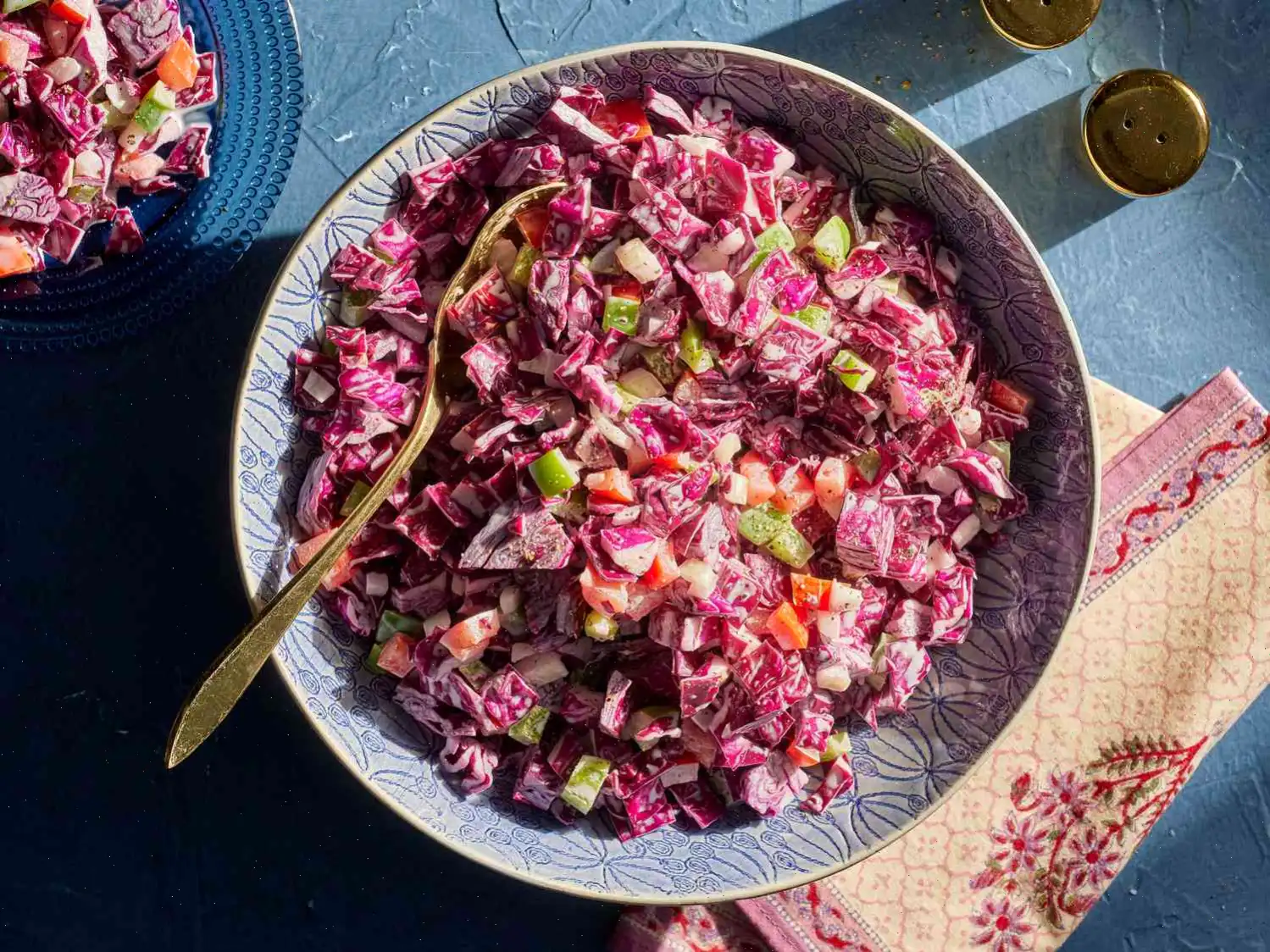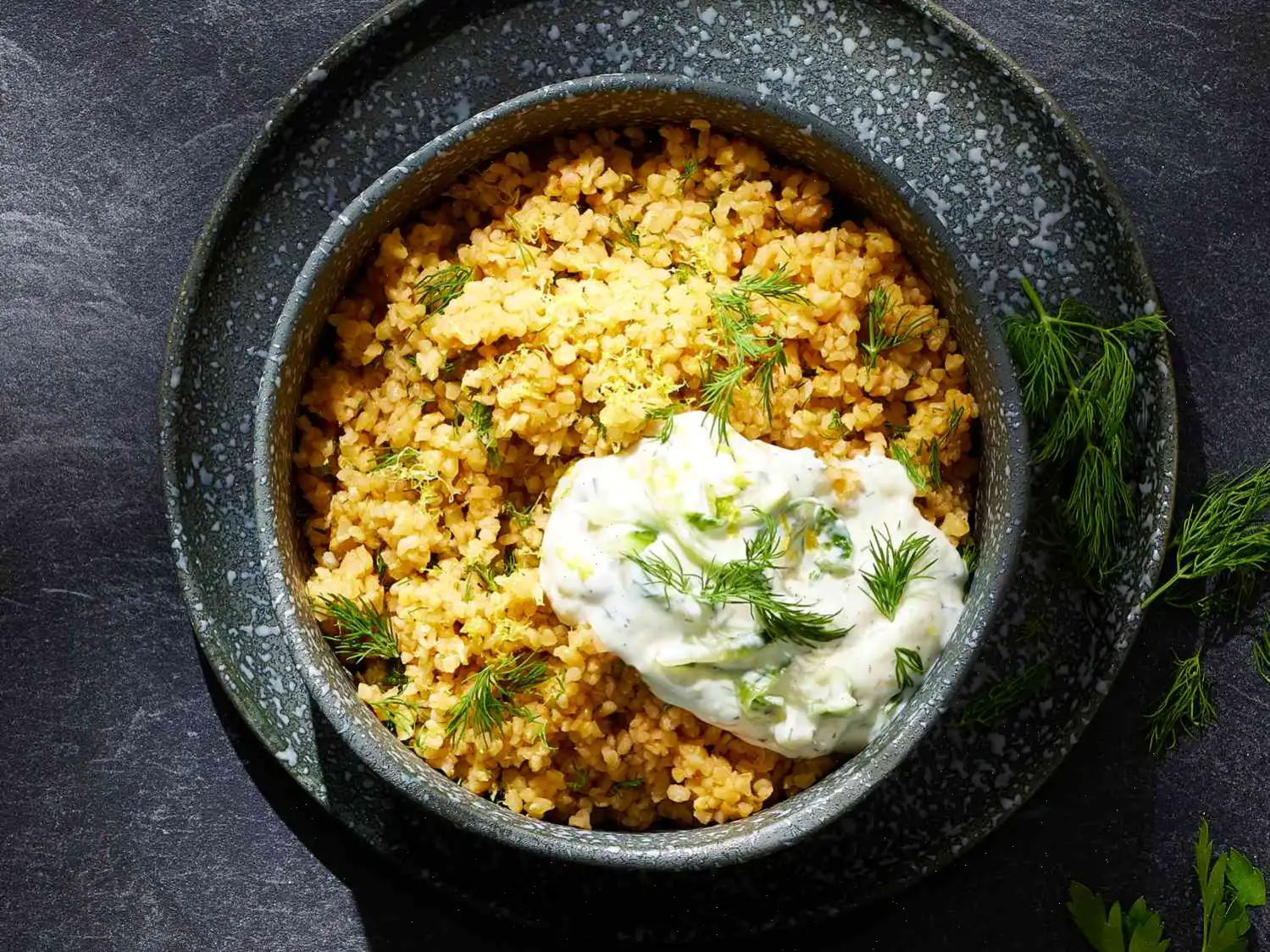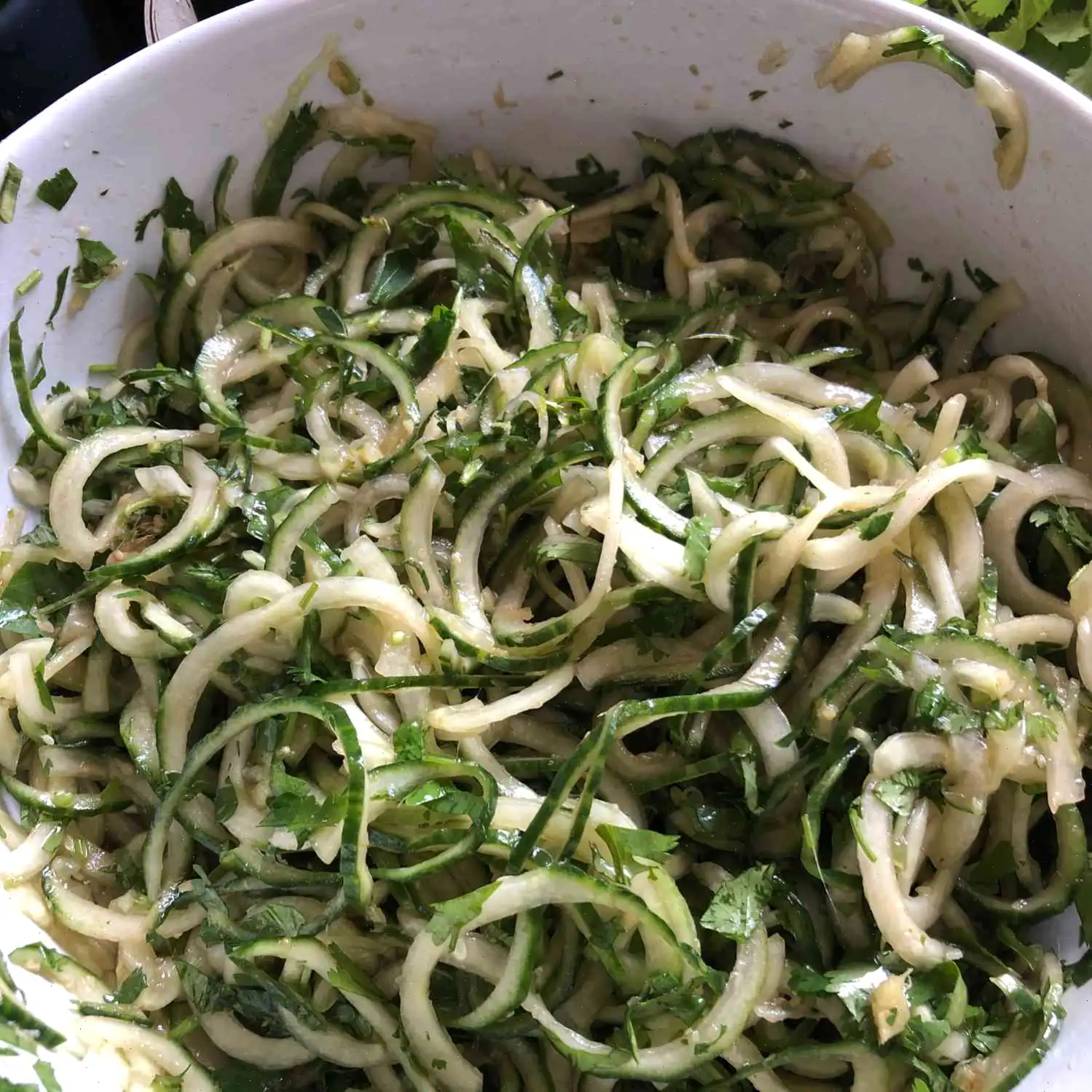
Cashew Basil Pesto Recipe
Ingredients
- 1 cup packed fresh basil leaves
- 1/2 cup grated Parmesan cheese
- 1/3 cup cashews with sea salt
- 1 garlic clove, or more to taste
- 1/2 cup olive oil
- 1 tablespoon lemon juice
Directions
Step 1: In the bowl of a food processor or blender, combine the fresh basil leaves, grated Parmesan cheese, cashews, and garlic.
Step 2: Add olive oil and lemon juice to the mixture.
Step 3: Blend everything together until a smooth paste forms.
Nutrition Facts
| Nutrition per Serving | Amount | % Daily Value |
|---|---|---|
| Calories | 197 | - |
| Total Fat | 20g | 26% |
| Saturated Fat | 4g | 19% |
| Cholesterol | 7mg | 2% |
| Sodium | 152mg | 7% |
| Total Carbohydrate | 2g | 1% |
| Dietary Fiber | 0g | 0% |
| Total Sugars | 0g | - |
| Protein | 3g | 5% |
| Vitamin C | 1mg | 1% |
| Calcium | 80mg | 6% |
| Iron | 0mg | 2% |
| Potassium | 32mg | 1% |
Servings: 6
Note: Percent Daily Values are based on a 2,000 calorie diet. Your daily values may be higher or lower depending on your calorie needs.
If you are following a medically restrictive diet, consult your doctor or dietitian before preparing this recipe.
Cashew Basil Pesto is a modern variation of the traditional Italian pesto. This vibrant green sauce is made by replacing the traditional pine nuts with cashews, which give it a slightly sweeter, creamier texture while still maintaining the essential rich and herbaceous flavors that make pesto so beloved. The addition of fresh basil, grated Parmesan cheese, garlic, and a dash of lemon juice adds complexity to the taste, while the use of olive oil creates the perfect consistency.
History and Origin of Pesto
The origin of pesto dates back to the northern Italian region of Liguria, where it was first created in the city of Genoa. Traditional pesto, also known as "Pesto alla Genovese," is made with fresh basil, garlic, pine nuts, Parmesan, and olive oil. The word "pesto" comes from the Italian word "pestare," which means "to pound" or "to crush," referring to the method of preparing the sauce by grinding the ingredients together in a mortar and pestle. This sauce has been a staple in Italian cuisine for centuries, often served with pasta, particularly the local trofie or trenette noodles. Over time, different regional variations have emerged, with some adding different nuts or even substituting basil with other herbs or vegetables.
Regional Variations and Modern Twists
While the classic pesto from Genoa remains the most famous, the use of alternative nuts has become increasingly popular in modern recipes. Cashew Basil Pesto, for example, is a contemporary adaptation that swaps the pine nuts with cashews. This variation offers a more affordable option without compromising the rich, nutty flavor. Cashews also add a creamy texture, which makes this pesto ideal for spreading on sandwiches, drizzling over grilled vegetables, or mixing into pasta dishes. Other regional pesto variations include the use of walnuts (as seen in Pesto alla Ligure) or almonds in southern Italy, which offer slightly different flavor profiles but still preserve the essence of pesto.
How Cashew Basil Pesto Differs from Similar Dishes
Cashew Basil Pesto is often compared to other nut-based sauces like almond or walnut pesto, or even the classic pine nut version. However, the key difference lies in its texture and flavor. Cashews provide a creamier, less earthy taste compared to other nuts, which makes the sauce smooth and subtly sweet. The addition of lemon juice in this recipe brings a zesty brightness that contrasts beautifully with the richness of the olive oil and cashews, setting it apart from other pesto variations that may not have the same acidity. While it shares similarities with traditional pesto, the choice of cashews makes this recipe unique, both in taste and texture.
Where Cashew Basil Pesto is Typically Served
Cashew Basil Pesto is incredibly versatile and can be used in a variety of dishes. It is commonly served with pasta, as it perfectly coats the noodles with its creamy, flavorful consistency. However, it is also great as a topping for roasted vegetables, a dip for bread or crackers, or even as a dressing for salads. The pesto pairs wonderfully with grilled meats, especially chicken or lamb, and can be used to enhance sandwiches, wraps, or even pizza. Its rich, herbaceous flavor adds a refreshing and aromatic dimension to many different types of dishes, making it a popular choice for both casual and gourmet meals.
Interesting Facts About Cashew Basil Pesto
1. Cashew Basil Pesto is an excellent source of healthy fats thanks to the olive oil and cashews. It is a nutritious addition to any meal, providing a good balance of protein, fiber, and essential fatty acids.
2. This pesto variation is a great option for people who are allergic to pine nuts or who simply prefer a different flavor profile. Cashews provide a creamy consistency that works well in both vegan and dairy-inclusive versions of the recipe.
3. While pesto is traditionally made by hand using a mortar and pestle, today, most recipes, including this one, are made using a food processor or blender for a quicker and more efficient preparation. However, grinding the ingredients by hand is still considered the best method for developing a truly flavorful pesto.
4. Cashews are native to Brazil, but they are now grown in many tropical regions around the world, including India and Africa. The nuts are not only used in cooking but also have various health benefits, including promoting heart health and improving skin appearance due to their rich content of vitamins and minerals.
FAQ about Cashew Basil Pesto Recipe
Comments
Rachel Thomas
10/06/2023 05:57:17 PM
I decided to save some money by using cashews instead of pine nuts, and I'm so glad I did! I brought this dish to a deck party and it was a hit, especially when paired with pita chips. The next day, I tried it with pasta and it was just as delicious. No one could even tell the difference. This recipe is definitely a keeper.


